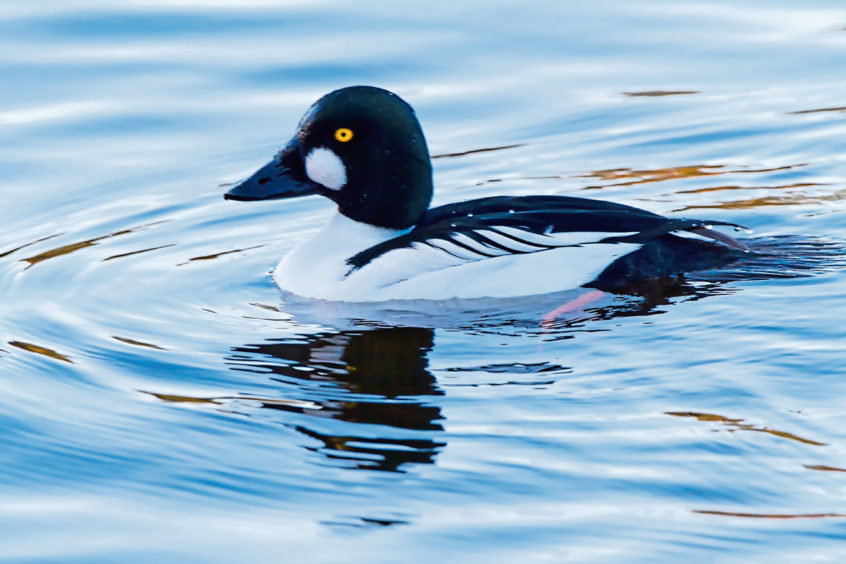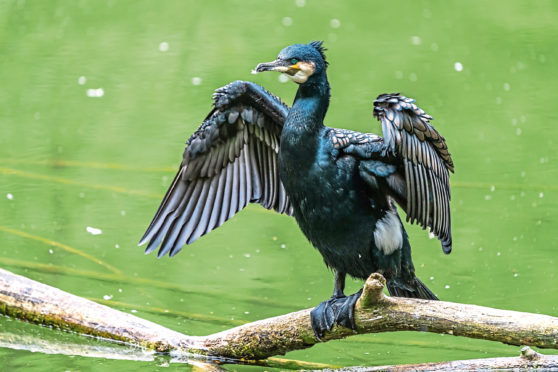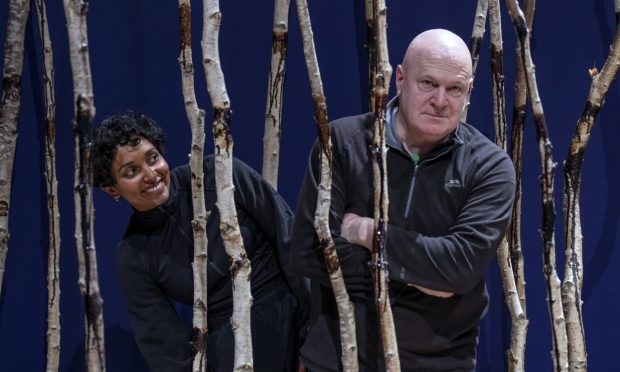Swirling snow, along with a biting headwind that brought tears to the eyes; not the best conditions for birdwatching, but out on the steely grey waters of this west Fife reservoir, a pair of goldeneyes bobbed.
It had been a while since I had last visited this trio of small reservoirs at Craigluscar near Dunfermline, so it was good to be back, even though the weather was miserable; the piercing air making it difficult to focus on the goldeneyes with my binoculars. They were active little ducks, continually roll-diving under the water in search of caddisfly nymphs and other invertebrates.
A winter migrant in the main from Scandinavia, goldeneyes are nervous birds that often take to the air on whistling wings at the first hint of danger. I was unable to discern any detail of their form because of the poor visibility, but the goldeneye really is a most aptly named duck. When it is calm and the sun shines, their bright yellow eyes glow like beacons. It was almost as if these brilliant orbs are powered by electricity, such is their burning intensity.
Two of the reservoirs here are regularly stocked with rainbow trout, so it wasn’t surprising to see several cormorants out on the water. The cormorant’s scientific specific name – carbo – means ‘black’, and this, combined with their prehistoric appearance has fuelled an association with dark satanic myths from the earliest of times.

Their efficiency as fishers led to cormorants being listed as vermin in Elizabeth I’s edict of destruction, and as such, the hand of humankind has been eternally against them. All very unfair, given that lots of other birds eat trout, but if you have a sinister demeanour, then prejudice will reign supreme. A compelling comparison is the dipper, a dumpy little songbird that haunts our rivers. As well as water invertebrates, dippers will also eat trout fry and eggs, yet it is, quite rightly, a bird that is universally adored, such is its benign bearing and engaging behaviour. Appearance is everything when it comes to developing our relationships with creatures.
On completing a circuit of the middle reservoir, we contemplated ascending the nearby Craigluscar Hill, but such was the ferocity of the weather, we decided against it. In the grey, angry sky above, a lone mute swan materialised, digging its wings deep into the cold winter air. It was heading to the easternmost reservoir, where we had earlier glimpsed two other swans.
Swans are social creatures and like to be with their own kind, and this one flew with purpose and direction, before quickly gliding down onto the water on whiffling wings to join its compatriots. Another wintry flurry swept across the reservoir, and the swans disappeared, clouded from view by a twirling tumble of snowflakes.
Info
Although mainly a winter visitor, small numbers of goldeneyes breed in Scotland, principally on lochs and lochans in Strathspey. They often use nest boxes specially erected for them.










